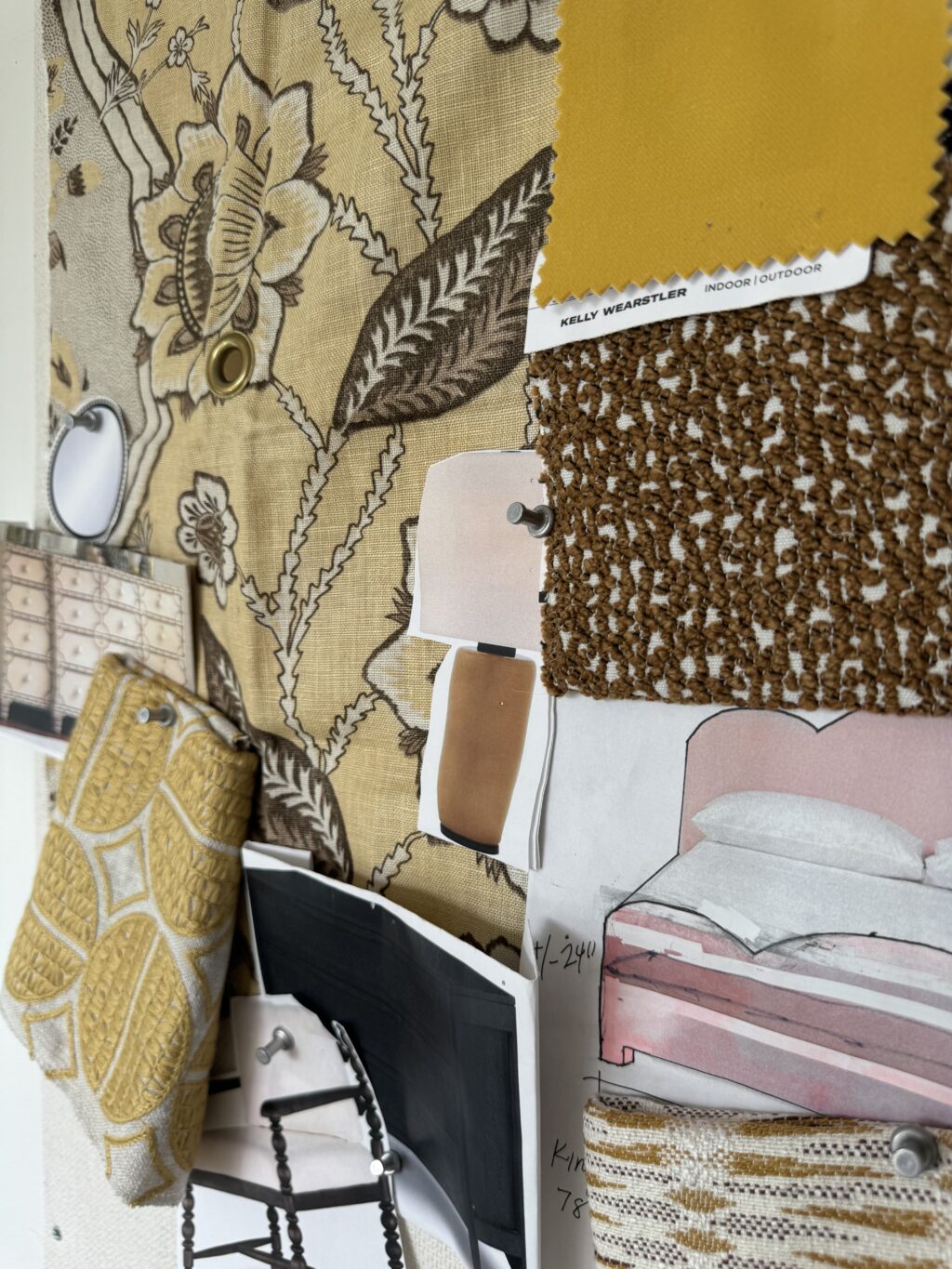A beautiful vase or bowl. A swatch of carpet, or fabric or even an orchid. Perhaps you have a treasured tchotchke, or an inspiration picture you stumbled upon while scrolling through Instagram or Pinterest. Believe it or not, each of these things inspired a design I have done for a client over the years, and it proves inspiration is everywhere! Just being open to our surroundings can lead to some seriously stunning spaces.
But I get it. Starting a design project can feel daunting. I recently heard something that caught my attention and might help you roll up your sleeves and dig in: try the “Secret Room Rule.” Ingrid Fetell Lee is the designer behind the School of Joy. She encourages people to approach design with a simple exercise: “Imagine that you have a secret room in your home that nobody else will ever see. What does that space look like?” What creativity and daring design this might inspire! It’s kind of like the design version of, “Dance like nobody’s watching.” But if you aren’t there quite yet, let’s at least get you started using ways that are tried and true, and best of all, easy to do.
- Find Your Inspiration
Look around your home or browse through design magazines and online platforms like Pinterest or Instagram. Is there a particular painting you adore? Perhaps the vibrant colors in that artwork could inspire the palette for a room. Maybe you’re drawn to a “look” or design style—mid-century modern, bohemian, Parisian or industrial. Research and explore the style, then find pieces to reflect and create the foundation for your project.
- Make a Mood Board
Gather images, fabric swatches, paint samples and other materials that capture the look and feel you want. A mood board can help visualize how different elements will work together. It’s a tactile way to experiment with colors, textures and patterns before making any major changes. I use Canva, Morpholio and Foyr Neo to digitally create my boards.
- Start Small
If you’re feeling overwhelmed, start with a small space; a powder room is ideal as is a corner of the living room, or you can just play around with an accent wall. Transforming something small can build your confidence and give you a sense of accomplishment, while encouraging you to tackle larger projects down the line.
- Embrace Your Style
Don’t worry so much about what’s trending. Your home should reflect your personal style, not the latest fad that will go out as hard as it came in. If you love it, it belongs in your home. Mix and match different styles and eras if that’s what resonates with you. The most memorable spaces are often those that bend the rules.
- Utilize Interior Design Tricks
Interior designers admittedly have a few go-to tricks that you can try on your own.
Layering: Combine different textures to add depth and interest. Use juxtapositions such as a smooth leather with soft velvet, a plush rug with sleek metal furniture, a small piece of art in a big space, or a fancy antique chandelier in a rustic or industrial setting.
Statement pieces: Invest in something that will draw the eye and set the tone for the room. This could be a bold piece of artwork, a vintage pair of sconces or a piece of furniture that’s surely one of a kind.
Functional floorplan: What is the flow of the room? That cannot be overlooked. Make sure there is enough space to move around comfortably, and that furniture is arranged in a way that allows for conversation and usability. Otherwise, it will become “that room,” the one no one uses or even wants to go in.
Personal touches: Incorporate items that mean something to you, such as family photos, travel souvenirs or heirlooms. These elements make your space uniquely yours and do not have that “showroom” look.
- Experiment with Color
Don’t be afraid to play with color, especially if it’s paint. A fresh coat can completely transform a space. The best part is that it can easily and relatively inexpensively be changed. If you’re worried about committing to a bold color, just use it in accessories like cushions and throws.
- Balance and Proportion
Keep balance and proportion in mind when arranging furniture and decor. Too much of one thing can overwhelm a space. I remember a design friend early on in my career visiting a bedroom I was working on and remarking: “It’s beautiful, but it just looks too comfy.” She was right! I needed to incorporate some harder lines and variety. Distribute colors, textures and sizes evenly throughout the room to create a harmonious look.
- Light it Right
We all know what fitting room lighting does to our souls. Throw your guests a bone and light them right! Lighting can make or break a design so be sure to mix ambient, task and accent lighting that creates a warm and inviting atmosphere. Don’t forget about natural light too; maximize it with mirrors and curtains that don’t cover up part of the window when they are open.
Do you feel a bit more equipped to take the design plunge? I truly hope so because designing your home should be a joyful and expressive process. The key sometimes is to just get started. Before you know it, your home will be a reflection of you and your unique journey; that’s something your friends and family would love to experience when they come over.
Share pictures at klmhome.com. I can’t wait to see!









More Stories
Embracing the Journey Into a New England Spring
At Home With Kerri-Lee
Fall in New England